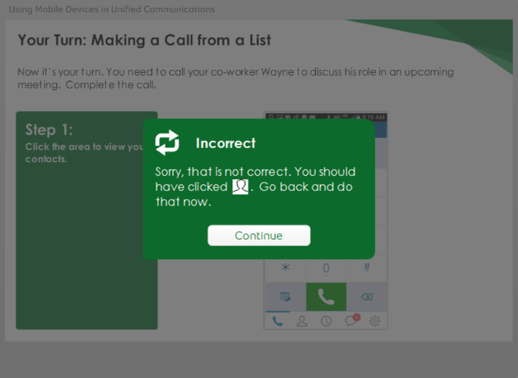Competency-Based Training: For Faster and More Effective Learning
What is Competency-Based Training?

How many people have heard this one. “But our staff need all of this information to do their job. We HAVE to include it in the course!” Yes, you guessed it. We are all living in the Information Age. We are bombarded with content of all types.
There’s nothing more demotivating than reading many paragraphs of text.
ELearning is not just some pictures added to text to make the information a little more palatable for the learners. ELearning development has to include an evaluation of the content and a determination of how to make it easy-to-assimilate.
Are we making the most of our learners’ time?
If there are too many paragraphs in a row, you may suggest to your learners that they can gloss over the content, and miss important points. It’s information overload, but there is information in there somewhere that needs to be learned.
It’s presenting the information in new ways by dissecting and filtering content. We need to assess ‘what is really critical’, and put it into useful terms to identify the practicality of the content AND teach the concepts.
Let’s look at an example.
The unified communications (UC) approach allows companies to manage calls in and out of an office. The mobile phone industry ties into the UC approach allowing your Android, BlackBerry, or Apple iPhone to handle calls seamlessly from the office. Besides all of the features of the system, each mobile device platform has specific steps for each procedure: you have to set the phone up, access the office directory, make conference calls, update status, transfer calls, and so on.
Based on this simple description, a learner could have to review background information and the five procedures for three different platforms. It’s not practical to review content that the learner does not need. This description includes at least 15 paragraphs of text to learn for the UC approach on one mobile device. It’s not practical.
Innovatia uses a different approach. Don’t give the learners ‘everything’. Give them the specifics. Of all of the phone features that are available, there are only four key features of the Unified Communications system. We represent each feature with an icon.

Typically, learners have one mobile phone platform. They don’t want to learn about all of them. Allow learners to choose which platform they have.
A sidebar: This topic configuration has the advantage of flexibility. If the learner changes their mobile device, they can come back and learn about another one.

What does the learner need to do? For Android phones, the learner has to configure the system. Each step has a screenshot and a highlight to click and advance. The purpose of the simulation is to give them the information in a practical manner. Specifically, what does the learner need, and how do they get there? By the time the learner logs in to the real system, it doesn’t feel like the first time.
The simulation proceeds through succinct steps, one at a time with guidance. The learner knows they’ve reached the end when they see a message.

Practice questions provide a test to see if the learner understands the materials. The learner reads the steps, and clicks on the appropriate area. Feedback is provided for both correct and incorrect answers, and the specific details of what they need to learn are tested.

The four methods in the Using Mobile Devices in Unified Communication example illustrate how we provide specific content that is relevant to the learner. They learn what is needed for their use specifically without overloading them in content. Learners get exactly what they need to know.

What is Competency-Based Training?

For Learning and Development (L&D) professionals, securing leadership buy-in for training initiatives can be challenging.

The artificial intelligence revolution isn't coming—it's already here. Yet a startling reality confronts today's organizations: only 8% of HR leaders...